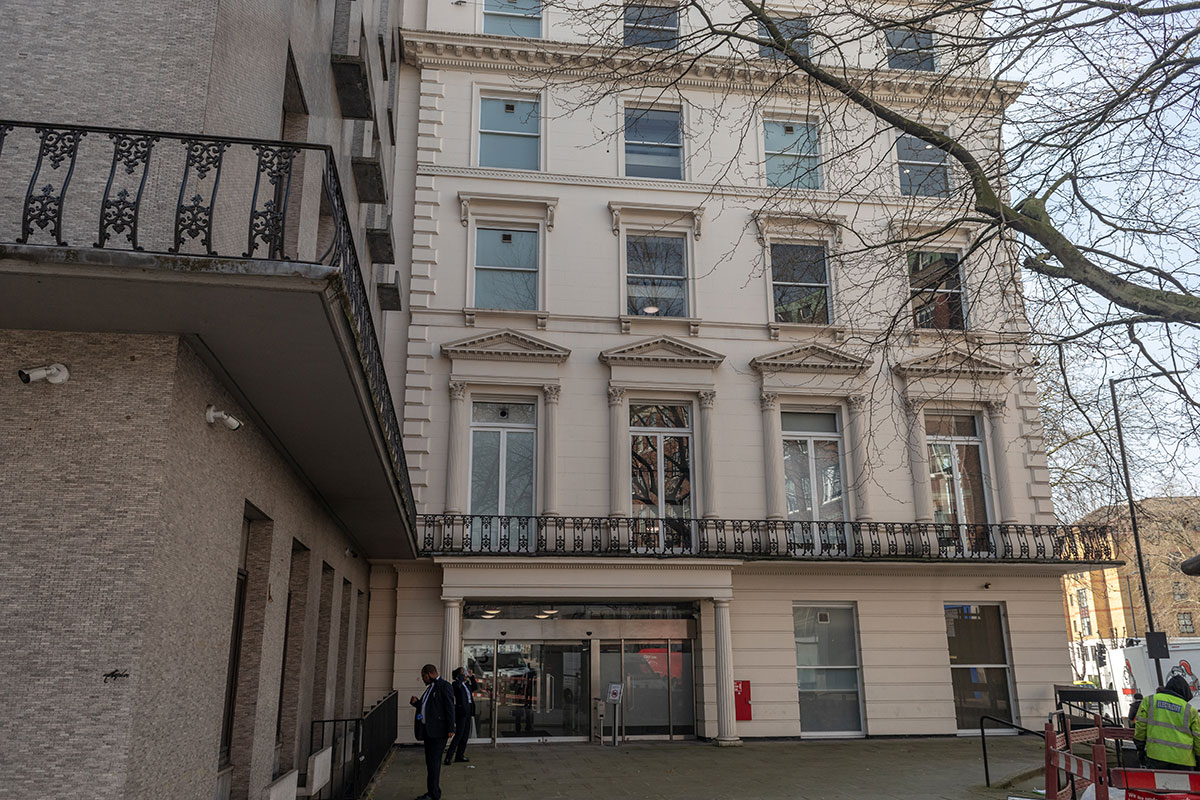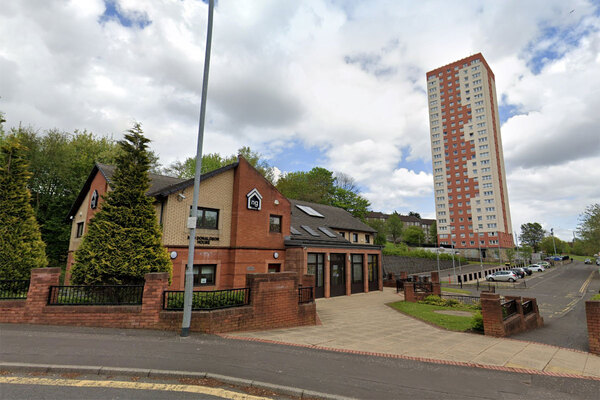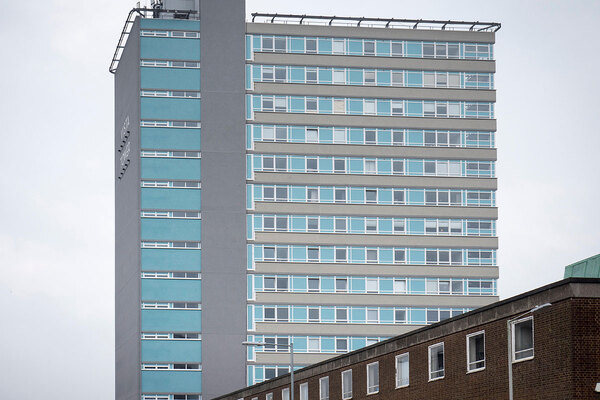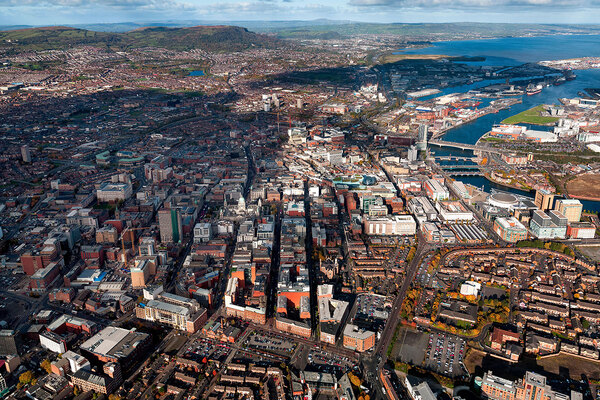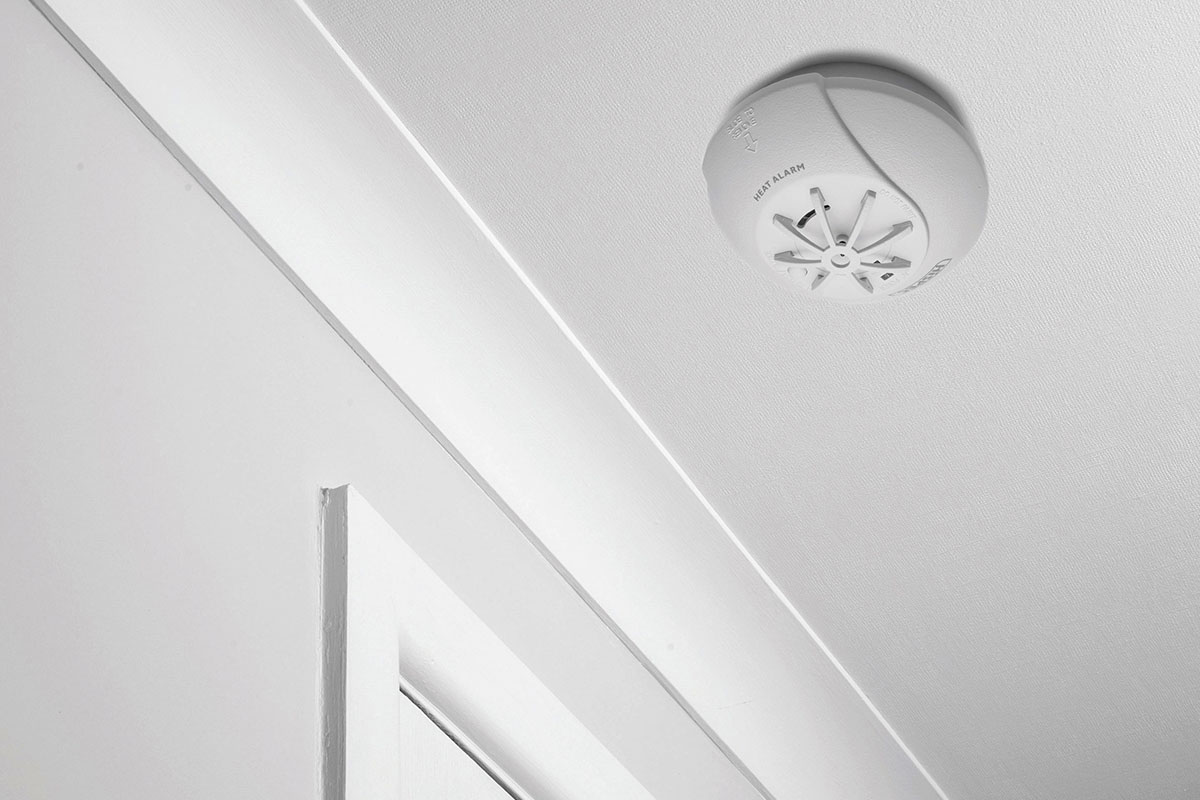Grenfell Tower Inquiry diary week 81: ‘This is Islamophobia, it is racism, the elephant staring back at us in the room’
This week, closing statements covering the aftermath of the fire delivered a shocking new revelation and an expert toxicologist gave his views on the causes of the deaths. Peter Apps reports
Two-and-a-half years on from the first explosive opening statements, the second phase of the Grenfell Tower Inquiry is reaching its conclusion.
But it has not lost the capacity to shock, with this week’s evidence delivering a stunning new piece of evidence about the Metropolitan Police’s actions in the days after the fire.
The week also saw Professor David Purser, an expert toxicologist, give important evidence on the cause and time of the death of the victims, as well as the contribution of various materials to the smoke that killed them.
We will begin with the big news of the week, relating to the police.
‘The majority of those affected are believed to come from a Muslim cultural background’
Monday saw lawyers for the various parties involved in proceedings give closing statements relating to the evidence covering the immediate aftermath of the fire.
The first of these came from Allison Munroe QC (pictured above), representing one of the groups of bereaved and survivors.
Not for the first time in this inquiry, her comments raised the issues of racism and discrimination. Describing it as “the elephant in the room”, she said: “Racism and discrimination, we say, played a very real part in the response to this tragedy. The playing field was not level. It never has been.”
Expanding this point, she read from a previously unseen risk assessment produced by the Kensington and Chelsea branch of the Metropolitan Police four days after the fire.
Warning of a risk of “outbreaks of crime and/or disorder within hours”, it said: “There is an expectation that the final death toll from the fire could rise substantially and with the cause still unknown, any subsequent disclosure could have an impact on community tensions.
“Especially when the majority of those affected are believed to come from a Muslim cultural background, combined with the incident occurring during the [holy] month of Ramadan.”
“Members of the panel, this is Islamophobia, it is racism, the elephant staring back at us in the room,” said Ms Munroe.
The response to this document from bereaved and survivors has been furious.
The issue of the death toll – which was unclear in the days after the fire and was estimated at 79 on the day this document was produced – was a major issue of distress and distrust for the community, with rumours circulating that it was being deliberately withheld to limit public anger.
Grenfell United, a group of bereaved and survivors, issued a statement that said: “We are disgusted, horrified. We are angry… Maybe this is why justice for people from our class and culture never progresses.”
Andrew Warnock QC, appearing for the Metropolitan Police, noted that the passage following the one quoted by Ms Munroe discussed working with “community leaders from local Mosques… to support those affected”, as well as “community leaders from other faith groups”.
“The [Metropolitan Police] sought to work in a positive way with all those affected by the tragedy. While it will not have got everything right, it would strongly refute any suggestion that Islamophobia affected its response to the tragedy,” he said.
The inquiry has also heard repeated accounts from bereaved residents seeking loved ones that they were shouted at and threatened with arrest by police.
“This focus on public order detracted resources and focus away from the relief effort,” said Ms Munroe. “This we find extraordinary, inexcusable and unforgivable.”
Danny Friedman QC, appearing for another group of bereaved and survivors, said that the authorities involved in the response were “more concerned about an uprising or unrest than they were about looking after families”.
Ms Munroe cited other examples of racial discrimination in the broader emergency response, including the lack of communication for non-English speakers, a failure to provide counsellors who spoke the language of the bereaved and a lack of Halal food.
She also described discrimination against other groups who should have been afforded protection under the Equality Act.
Disabled residents, known to the Royal Borough of Kensington and Chelsea’s (RBKC) adult services team, were treated with what she called “indignity and disregard”.
“They were grieving for friends, relatives, for neighbours, they were bereft of all their worldly possessions,” Ms Munroe said. “These residents were placed nonetheless in hotels on high floors, in rooms that were not adapted for their most basic needs.”
Pregnant women who fled the tower were left “living and sleeping in entirely inappropriate accommodation”, she added.
Children also suffered. “Families found themselves in hotel rooms with no facilities to sterilise bottles and no cots if they had small children, babies and infants. School-age children, some of whom had exams to sit that week, had no uniforms to go to school in, they had no room to study. Often whole families were sharing one hotel room, so teenagers had no privacy and no space,” she said.
The inquiry has previously heard concerns about conditions in a major ‘rest centre’, located in the Westway Sports Centre, where bereaved and survivors had to go to access support and information.
“There was the insensitivity of the police cordon, which again illustrates a hostile approach by RBKC, seeing residents and survivors as the enemy,” said Ms Munroe. “Residents and survivors described the interviews at the Westway as robotic and little more than tick-box exercises.
“The lack of co-ordination meant that people had to repeat and therefore relive their story and their trauma to myriad individuals and agencies, causing further distress. It was… inhumane and cruel. They did not care about us.”
‘The community’s heart was literally broken and yet some were being characterised as the villains of the piece’
Ms Munroe also pointed to comments made by RBKC staff in the aftermath of the fire, which described survivors raising concern about the council's response as “a small number of known local instigators who continue to fabricate stories in order to further their aims”.
The inquiry has previously heard that Nicholas Holgate, then chief executive of the council, said there was “great concern over community tension”, with “hostile residents very vocal in negative comments towards the incident” in a meeting with central government a day after the fire.
“With the embers of the tower still glowing hot, the spin and deflection began,” said Ms Munroe. “We ask, ‘Why would a responsible authority even seek to raise matters such as this at a time when people were in such physical and emotional pain?‘
“The community’s heart was literally broken and yet some were being characterised as the villains of the piece.”
Particular staff members at RBKC came in for criticism from the community’s lawyers. These included Laura Johnson, then director of housing at RBKC, for her efforts to provide emergency housing.
“Everyday moral restraints make it hard for people, especially public servants, to admit inhumanity or comprehend that inhumanity is not restricted to bad people,” said Mr Friedman. “And yet it occurs in bureaucracies and businesses when basic moral restraints become neutralised or otherwise compromised.
“Consider Laura Johnson. She presided over the assignment of residents into hotels with no regard to their human well-being once warehoused in this way.
“Johnson’s account is about the movement of bodies and things, not people. And she did this in a fashion that no one would ever do to their own family or friend or anyone whose lives they knew anything about.”
Mr Holgate also attracted criticism for his now-notorious decision not to call for outside help, against the advice of his emergency planner, telling colleagues “that looks like we can’t cope”.
“When he protests that it was not part of his make-up as a career civil servant… what he really means is ‘I am not the kind of person who would want to be seen as refusing help for those reasons’. However, out of arrogance and defensiveness, that is just what he did,” said Mr Friedman.
For the council’s part, their lawyer, James Maxwell-Scott QC (pictured above), accepted a number of failures – to add to those he admitted in opening statements for this module.
However, he added: “It would be unwise to assume that everything would have been fine if the council had performed to an adequate level. That sort of thinking breeds complacency about the robustness of the current national and local system for dealing with emergencies.”
‘That indifference caused the people who lived, survived or lost loved ones from this fire to pay such a terrible price’
On a broader level, Mr Friedman (pictured above) was critical of what he called “subsidiarity” – the principle in emergency planning that central government will defer to the leadership of local structures.
“Subsidiarity turned out to be to civil contingency what ‘stay put’ is to fire and rescues. It’s a policy assumption that was allowed to become imprisoning as an article of faith,” he said.
Calling for the inquiry to recommend change in this area, he said: “The rationalist professional outlook of modern bureaucracy has taught itself to be distant and disconnected from people and communities, and especially those who may be marginalised on grounds of class, race and disability. The damage done by such discrimination is profound. It is anti-social.
“The fact that this inquiry is not a commission into social housing or the future of the welfare state should not stop it from reporting on how government became anti-social in its indifference, and how that indifference caused the people who lived, survived or lost loved ones from this fire to pay such a terrible price.”
Ms Munroe said: “No community should have to go through such painful and degrading experiences, as our clients did in the aftermath of this fire.
“When they should have been protected and enveloped in the protective arms of the state, they were treated as a hindrance – second-class citizens who did not warrant the care, kindness and support that they should have been given immediately and unconditionally.”
Ms Munroe closed her statement by quoting the words of Hanan Wahabi, who escaped the tower but lost her brother and his family in the blaze.
She said: “I cannot help but feel that had our community lived in a different part of the borough, on the more affluent side, had we been from a different class, had we been less ethnic, the response in the aftermath would have been immediate. It would have been present. It would have been felt. We may be different. We may be diverse, but we are people.”
‘This was a key event’
Following the closing statements, the inquiry heard two days of evidence from toxicology expert Professor Purser (pictured above).
Professor Purser, who also provided a report for the first phase of the inquiry, was instructed to give his views on the cause and time of death of the 72 victims, as well as the contribution of various materials to the toxic smoke they inhaled.
Much of Professor Purser’s evidence was taken up with his estimates for the time of death of various victims of the fire, which ranged from close to 1.30am for a group who became trapped on a smokey lobby on the 10th floor, through to close to 4.30am for some residents in flats on the opposite side of the building to where the fire started.
It is not necessary to recap the precise, and frequently harrowing, detail of this part of his evidence here. It is worth pointing out, though, that these issues could prove extremely important if questions of causation become an issue in future criminal or civil proceedings.
More broadly, Professor Purser gave evidence about the smoke conditions in the tower and the impact on the residents who were trapped.
He explained that as someone begins to breathe in smoke, they are gradually increasing the percentage of toxins in their blood. When they pass certain thresholds, they will collapse and then die.
His studies, which included examining blood samples from victims and survivors, concluded that it was likely the deaths of those found inside the tower were caused by smoke rather than flame.
He said the conditions in the lobbies – the landings outside the six flats on each floor – were extremely severe in terms of smoke, with conditions that could cause collapse within three minutes.
On the stairs, however, the conditions were bad but never quite as severe as the lobbies. Professor Purser estimated that an adult could descend for 15 minutes before being overcome.
Crucially, though, this depended on how much smoke they had inhaled before entering the staircase. If they had already breathed in a lot while in their flats or in the lobbies before entering the stairwell, their chances of surviving were much lower.
This is why some people were able to descend from the top floor, even after the stairs had filled with smoke, while others collapsed and died almost instantly on entering the stairwell.
Professor Purser also drew attention to the significance of the lobbies filling with smoke so rapidly during the relatively early stages of the fire.
This was a key factor, he said, in discouraging people from leaving – particularly those with disabilities or children.
“I feel [this] strongly inhibited those who had remained in their flats from attempting to escape,” he said. “[It] led to many of them remaining in their flats and ultimately led to them being overcome by asphyxiant gases and dying in their flats. So this was a key event.”
“Not only did they have the immediate problem of the horrible conditions they were facing in the lobby, but they also had the question of, ‘If I were to make it through this lobby to the stair, what’s it going to be like,’” he added.
This is important evidence, because the inquiry has heard much in earlier modules about the failure to fix, check and maintain self-closing devices on the flat entrance doors in Grenfell Tower despite repeated specific warnings.
Doors that stood open after residents fled burning flats were a key cause of the rapid smoke spread to lobbies, Professor Purser said.
As the inquiry discussed at length in its first phase, residents who phoned 999 were also advised to stay put and await rescue until at least 2.35am.
‘The total concentrations of [carbon monoxide] in the smoke would have been derived more or less 50/50 from these two materials’
So what caused the smoke that filled lobbies, stairwells and ultimately the residents’ flats with choking, toxic smoke?
Professor Purser pointed to three ‘fuel packages’ that were primarily responsible for it.
First, the cladding system on the outside of the tower, comprising the aluminium composite material (ACM) cladding panels (pictured above) and the plastic foam insulation.
Second, the window surrounds, which included the uPVC frames and various insulation materials installed around them.
Third, the contents of the flats that were ultimately consumed by the fire.
During the early stages of the fire, with not many flats on fire, the smoke came mostly from the first two of these packages.
Professor Purser said the contribution of carbon monoxide from the ACM panels and the insulation on the walls of the tower was “approximately equal”.
“The total concentrations of [carbon monoxide] in the smoke would have been derived more or less 50/50 from these two materials,” his report said.
It was the carbon monoxide which ultimately caused the deaths, he said.
The insulation, mostly made by an organisation called Celotex, also released hydrogen cyanide when it burned, which is also an asphyxiant gas.
However, Professor Purser estimated that the smoke contained 27 times more carbon monoxide than cyanide, making the carbon monoxide much more significant in the deaths.
He said the contribution of cyanide to the deaths was “relatively minor”, but added that it may have been more significant in triggering the collapse of some of the victims. This was particularly true for the three residents stuck in the lobby on the 10th floor.
Professor Purser’s evidence followed Professor Luke Bisby, who explained the contribution of the various materials to the fire spread.
Professor Bisby’s research found that the cladding panels made a far larger contribution to the fire spread than the insulation, putting its contribution at between 2% and 10%.
So taking their evidence together, the view appears to be that the cladding panels were responsible for the fire spread, but both the cladding and insulation were responsible for the smoke.
What’s next?
The inquiry will now move into its final module, which will consider additional evidence relating to the circumstances of the deaths of the 72 victims.
Our coverage of this last module will be a little different, as we have explained here.
Grenfell Tower Inquiry week 81: headlines
The Metropolitan Police has been accused of Islamophobia by lawyers acting for the Grenfell Tower community, as a result of a document that predicted “crime and disorder” in the days after the blaze due to the fact that “the majority of those affected are believed to be coming from a Muslim cultural background”.
Rapid spread of smoke to lobbies a ‘key event’ in Grenfell deaths, expert says
The “rapid” filling of lobbies outside flats with smoke, often due to missing self-closers on front doors, was a “key event” in the deaths at Grenfell Tower, an expert toxicologist has told the inquiry.
The cladding panels and insulation boards used on the walls of Grenfell Tower contributed roughly equal amounts of suffocating gas to the toxic smoke that trapped and killed the victims of the blaze, an expert toxicologist has said.
Sign up for our weekly Grenfell Inquiry newsletter
Each week we send out a newsletter rounding up the key news from the Grenfell Inquiry, along with the headlines from the week
Already have an account? Click here to manage your newsletters
Grenfell Tower Inquiry phase two: weekly diaries
Module one: the refurbishment
Week one: A vivid picture of a broken industry
After a week of damning revelations at the opening of phase two of the Grenfell Tower Inquiry, Peter Apps recaps the key points
Click here to read the full story
Week two: What is the significance of the immunity application?
Sir Martin Moore-Bick has written to the attorney general requesting protection for those set to give evidence at the Grenfell Tower Inquiry. Peter Apps explains what the move means
Click here to read the full story
Week three: Architects of misfortune
This week saw the lead architects for the Grenfell Tower refurbishment give evidence to the inquiry. Peter Apps runs through the key points
Click here to read the full story
Week four: ‘I didn’t have any perception that it was the monster it’s become’
The architects continued to give evidence this week, outlining a lack of understanding of the fire risk posed by the cladding materials and its design. Nathaniel Barker reports
Click here to read the full story
Week five: ‘No adverse effect in relation to external fire spread’
As the Grenfell Tower Inquiry returns from its long absence, Peter Apps recaps the key points from a week of important evidence from the fire consultants to the refurbishment
Click here to read the full story
Week six: ‘I can’t recall any instance where I discussed the materials with building control’
Nathaniel Barker summarises what we learned from fire engineers Exova, architects Studio E and the early evidence from contractor Rydon
Click here to read the full story
Week seven: ‘I do not think I have ever worked with a contractor operating with this level of nonchalance’
Two key witnesses from contractor Rydon gave evidence this week. Peter Apps recaps some of the key points from a revealing week of evidence
Click here to read the full story
Week eight: ‘It haunts me that it wasn't challenged’
Four witnesses from contractor Rydon gave evidence this week. Lucie Heath recaps what we learned on the last week of evidence before the inquiry breaks for five weeks
Click here to read the full story
Week nine: ‘All I can say is you will be taken out for a very nice meal very soon’
This week the inquiry heard evidence from witnesses at Harley Facades, the sub-contractor responsible for Grenfell Tower’s cladding. Peter Apps recaps the key points
Click here to read the full story
Week 10: ‘As we all know, ACM will be gone rather quickly in a fire!’
As the Grenfell Tower Inquiry entered its 10th week, Jack Simpson recaps the key points from a week of important evidence from the refurbishment’s cladding contractor
Click here to read the full story
Week 11: ‘Did you get the impression Grenfell Tower was a guinea pig for this insulation?’
With witnesses from the cladding subcontractor, the firm which cut the deadly panels to shape and the clerk of works which inspected the job giving evidence this was week full of revelations. Peter Apps recaps the key points
Click here to read the full story
Week 12: ‘Would you accept that was a serious failing on your part?’
With the surveyor who inspected Grenfell Tower for compliance giving evidence, this was a crucial week from the inquiry. Dominic Brady and Peter Apps report
Click here to read the full story
Week 13: ‘Value for money is to be regarded as the key driver for this project’
With consultants to Kensington & Chelsea Tenant Management Organisation (KCTMO) giving evidence, attention at the Grenfell Tower Inquiry turned for this first time to the actions of the TMO and the council. Peter Apps reports
Click here to read the full story
Week 14: ‘Did it not occur to you at this point that your budget was simply too low?’
This week, for the first time in phase two, the inquiry heard from Kensington & Chelsea Tenant Management Organisation, the landlord that oversaw the fatal refurbishment of Grenfell Tower. Lucie Heath reports
Click here to read the full story
Week 15: ‘Have you ever informed the police that you destroyed documents relevant to their investigation?’
Witnesses from the Kensington and Chelsea Tenant Management Organisation (KCTMO) gave evidence for a second week, which began with a shocking revelation about withheld and destroyed evidence. Peter Apps recaps
Click here to read the full story
Week 16: ‘I conclude this was very serious evidence of professional negligence’
This week saw members of Kensington & Chelsea Tenant Management Organisation finish giving evidence, before the inquiry’s expert witnesses took the stand to make some highly critical assessments of the work they had seen before and during the refurbishment of Grenfell Tower. Jack Simpson recaps
Click here to read the full story
Grenfell Tower: a timeline of the refurbishment
Following the conclusion of module one of the Grenfell Inquiry’s second phase, Peter Apps presents a timeline of the key moments during the fatal refurbishment of the west London tower block
Click here to read the full story
Module two: the cladding products
Week 17: ‘It’s hard to make a note about this because we are not clean’
The start of the second module of the Grenfell Tower Inquiry phase two came with some huge revelations about the companies that sold the products used in the cladding system. Peter Apps reports
Click here to read the full story
Week 18: ‘It was just reckless optimism wasn't it?’
As the inquiry began cross-examining witnesses for the second module of its phase two work, the picture surrounding just how Grenfell Tower ended up wrapped in such dangerous materials became a little clearer. Nathaniel Barker was keeping an eye on proceedings
Click here to read the full story
Week 19: ‘And that was intentional, deliberate, dishonest?’
The Grenfell Tower Inquiry this week heard the shocking story of how the insulation manufacturer “manipulated” official testing and marketed its product “dishonestly”. Peter Apps tells the story
Click here to read the full story
Week 20: ‘We were outed by a consultant who we then had to fabricate a story to’
This week the inquiry investigated the actions of Kingspan – the manufacturer of one of the insulation products used in the tower’s cladding system. Dominic Brady reports
Click here to read the full story
Week 21: ‘It’s there in black and white isn't it? We see a complete absence of any consideration of life safety’
The story of insulation giant Kingspan’s testing and marketing of its combustible insulation for high rises was unpacked in minute detail this week. Peter Apps reports
Click here to read the full story
Week 22: ‘All we do is lie in here’
In the third week of evidence from insulation giant Kingspan, the inquiry continued to uncover shocking details about the firm’s behaviour both before and after the Grenfell Tower fire. Lucie Heath reports
Click here to read the full story
Week 23: ‘That would have come as an earthquake to you at the time, would it not?’
This week the inquiry took its deepest dive yet into the inner workings of the cladding manufacturer whose product has been blamed for the terrible spread of fire up Grenfell Tower. Nathaniel Barker reports
Click here to read the full story
Week 24: ‘Do you accept that Test 5B was Arconic's deadly secret’
The president of the firm that made and sold the cladding panels installed on Grenfell Tower was asked to account for the apparent concealment of “disastrous” fire tests on the product this week. Peter Apps reports
Click here to read the full story
Week 25: ‘This is quite an incredible list of omissions and missed instances, isn’t it?’
This week the Grenfell Tower Inquiry heard its first witnesses from the Building Research Establishment (BRE) - the testing house which carried out key fire tests on the Kingspan and Celotex insulation products which were later used on Grenfell Tower. Peter Apps reports.
Click here to read the full story
Week 26: 'You were taking an enormous risk, weren't you?'
Week 26 at the Grenfell Tower Inquiry was a key moment in understanding how dangerous products used on the tower came to be accepted by industry professionals. Dominic Brady reports
Click here to read the full story
Week 27: ‘What will happen if one building made out [of] PE core is in fire and will kill 60 to 70 persons?’
The most explosive evidence this week at the Grenfell Tower Inquiry came from those who did not attend, as the evidence which would have been presented to Arconic witnesses was displayed in their absence. Peter Apps reports
Click here to read the full story
Week 28: ‘This is a serious safety matter’
This week the Grenfell Tower Inquiry zeroed in on the British Board of Agrément, the body that produced “misleading” certificates which inspired trust in both the cladding and insulation used on the tower. Lucie Heath reports
Click here to read the full story
Week 29: ‘Is it true that Kingspan’s position… was to do its best to ensure that science was secretly perverted for financial gain?’
The final week in this section of the Grenfell Tower Inquiry primarily examined the attempts by insulation manufacturer Kingspan to lobby government after the fire. Peter Apps reports
Click here to read the full story
How the products used in Grenfell Tower's cladding system were tested and sold
As the section of the Grenfell Tower Inquiry examining how the products used in the cladding system were tested, marketed and sold comes to a close, Peter Apps summarises what we have learned about each of the products included in the system
Click here to read the full story
Module Three: the management of the tower
Week 30: ‘There is certainly a high probability that in the event of a fire the whole building can become an inferno’
The focus of the inquiry shifted this week to the actions of the social housing providers responsible for maintaining Grenfell Tower. Pete Apps recaps what we learned
Click here to read the full story
Week 31: ‘If we cannot get out people will die’
This week saw the former residents of Grenfell Tower enter the witness box to tell of their experiences attempting to raise complaints with the council and its managing agent. Pete Apps reports
Click here to read the full story
Week 32: ‘Let's hope our luck holds and there isn't a fire’
This week saw the return of the landlord of Grenfell Tower, Kensington and Chelsea Tenant Management Organisation (KCTMO), as senior staff members attempted to explain how vital fire safety protections at the block were allowed to fall into disrepair. Lucie Heath reports
Click here to read the full story
Week 33: ‘Isn't that a serious gap in the scope of a policy meant to safeguard vulnerable people?’
A slightly disjointed week at the Grenfell Tower inquiry saw further evidence from staff at building manager Kensington and Chelsea Tenant Management Organisation (KCTMO) interspersed with the views of a cladding expert. Peter Apps reports
Click here to read the full story
Week 34: ‘Some members of the community are doing their best to spread false information’
Jack Simpson covers all the major revelations from the past week of evidence at the Grenfell Inquiry, including evidence from Laura Johnson, director of housing at the Royal Borough of Kensington and Chelsea.
Click here to read the full story
Week 35: ‘I really didn’t like the champagne’
This week the Grenfell Tower Inquiry saw council witnesses, including former deputy leader Rock Feilding-Mellen and leader Nicholas Paget-Brown, questioned about their role in the story for the first time. Peter Apps reports
Click here to read the full story
Week 36: ‘Is that not a very incurious approach for a fire risk assessor?’
This week the Grenfell Tower Inquiry scrutinised the work of Carl Stokes, the man hired to carry out fire risk assessments for the block. Nathaniel Barker reports
Click here to read the full story
Week 37: ‘In giving that advice, weren’t you acting beyond your knowledge and expertise?’
A curtailed week at the Grenfell Tower Inquiry saw fire risk assessor Carl Stokes grilled over advice he gave regarding the tower’s cladding. Peter Apps reports
Click here to read the full story
Week 38: ‘Well it’s a bit more than that, isn’t it. He’s suggesting that you tell the LFB a lie’
The inquiry heard the mammoth cross-examination of KCTMO’s health and safety manager Janice Wray this week. Peter Apps reports
Click here to read the full story
Week 39: ‘What you said there was a grotesque understatement’
This week the inquiry continued to hear from former employees of Kensington and Chelsea Tenant Management Organisation, as well as two employees from the London Fire Brigade. Lucie Heath reports
Click here to read the full story
Week 40: ‘An exercise in concealment and half-truth’
Former KCTMO chief executive Robert Black gave his evidence to the inquiry this week and was asked to account for the various failures described over the previous six weeks. Peter Apps and Nathaniel Barker report.
Click here to read the full story
Week 41: ‘We should do nothing. This is not the sort of website we should be responding to’
This week saw the return of Robert Black, chief executive of Kensington and Chelsea Tenant Management Organisation (KCTMO), before the inquiry turned its attention to the defective smoke control system in the tower. Dominic Brady reports
Click here to read the full story
Week 42:‘They would leak as much as they leaked. They were what they were’
The Grenfell Tower Inquiry continued its in-depth investigation of the tower’s non-compliant smoke control system this week, with evidence from the various contractors involved in delivering it. Pete Apps reports
Click here to read the full story
Week 43:‘Contractors at the time were not generally aware of the importance of leaving holes unsealed’
This week the inquiry focused on two of the more overlooked areas of the Grenfell Tower fire, with evidence focusing on the gas pipelines and lifts within the west London block. It was a packed week, with five witnesses giving evidence. Jack Simpson reports
Click here to read the full story
Week 44:‘I've never seen a fully compliant firefighting lift in any local authority building, to this day actually’
This week the inquiry turn the focus onto the building’s defective lifts, with evidence from an expert, contractors who worked on them and a former engineer at KCTMO. Pete Apps reports.
Click here to read the full story
Week 45: ‘Don’t you find all this rather a surprising debate, given that the Equality Act was passed in 2010?’
The inquiry heard from expert witness Colin Todd this week, who gave his views about the work of risk assessor Carl Stokes as well as answered questions about his own guidance. Peter Apps and Nathaniel Barker report
Click here to read the full story
Week 46: ‘I think I've been very, very clear that is completely wrong’
This week the inquiry heard further expert evidence about fire risk assessor Carl Stokes’ actions, as the section of its work covering the management and maintenance of the tower concluded. Peter Apps reports
Click here to read the full story
Six key failures in the way Grenfell Tower was managed before the fire
Peter Apps recaps some of what we have learned about the actions of the Royal Borough of Kensington and Chelsea (RBKC) and Kensington and Chelsea Tenant Management Organisation (KCTMO) in the years before the fire.
Module one and two closing statements
Week 47: ‘An unedifying spectacle’
After a week of closing statements from the core participants involved in modules one and two, Lucie Heath recaps the key arguments of each group
Click here to read the full story
Module five: the fire brigade
Week 48: ‘They knew, and lives could and should have been saved’
The phase of the Grenfell Tower Inquiry examining the actions of the London Fire Brigade in the years before the fire kicked off this week with some major revelations. Peter Apps reports
Click here to read the full story
Week 49: ‘I'm not sure we've always taken every opportunity to learn as an organisation’
How the London Fire Brigade acted upon lessons from incidents in the years before the Grenfell Tower disaster came under the microscope this week at the public inquiry. Nathaniel Barker reports
Click here to read the full story
Week 50: ‘There is a culture in LFB that is very conservative. I think there is great comfort in what is familiar’
This week the inquiry heard how the London Fire Brigade (LFB) elected not to issue warnings about dangerous cladding before Grenfell and a detailed examination of its policy for checking high risk buildings. Pete Apps reports.
Click here to read the full story
Week 51:‘We teach firefighters to expect building failure’
An unusually brief week of evidence at the Grenfell Tower Inquiry explored how a fire service neighbouring London was taking a different approach to tackling blazes in high rises. Nathaniel Barker reports
Click here to read the full story
Week 52: ‘I actually think that there is a measure of incompetence at all levels’
Expert evidence concluded the current section of the inquiry with some stinging criticism of the London Fire Brigade (LFB). Pete Apps and Grainne Cuffe report.
Click here to read the full story
Module six: fire services
Week 53: ‘They make for chilling reading and harrowing listening’
The inquiry’s investigation into central government began this week with lawyers setting out their view on how and why firefighting policies failed. Peter Apps and Lucie Heath report
Click here to read the full story
Week 54: ‘Our consideration of evacuation at this time was something of a blind spot’
The development of policy on ‘stay put’, both nationally and for London, occupied the attention of the inquiry this week. Peter Apps reports
Click here to read the full story
Week 55: ‘My review is pretty scathing!’
In a week that included the 200th day of evidence in phase two of the inquiry, attention turned to the London Fire Brigade’s control room. Lucie Heath reports
Click here to read the full story
Week 56: ‘Why didn't we thump the table harder’
This week, the control room at the London Fire Brigade was examined further – both before and after the fire. Pete Apps and Lucie Heath report
Click here to read the full story
Week 57: ‘It was worse than slow, it was sluggish’
Former London Fire Brigade (LFB) commissioner Dany Cotton was the star witness this week, as the inquiry continued to delve into the brigade’s knowledge and training before the Grenfell Tower fire. Jack Simpson, Grainne Cuffe and Pete Apps report
Click here to read the full story
Week 58: ‘I don't think we deserve to ask for trust until we demonstrate different outcomes’
A current and former commissioner of the London Fire Brigade (LFB) wrapped up the inquiry’s investigation into the actions of the brigade before the fire. Grainne Cuffe and Peter Apps report.
Module six: testing and government
One of the major scandals of our time: key revelations as the Grenfell Tower Inquiry turns to government
The government was accused of “covering up” the risks of dangerous cladding as its “unbridled passion for deregulation” left it a “junior party” to the construction industry as the latest phase of the public inquiry opened today. Peter Apps summarises some of the main points
Click here to read the full story
Week 59: ‘Recent tests have apparently shown it continued to burn for 20 minutes after the flame was taken away’
After shocking opening statements, the Grenfell Tower Inquiry turned its attention to the work of Local Authority Building Control. Pete Apps reports
Click here to read the full story
Week 60: ‘You could have an exact repeat of the Dubai fire in any number of buildings in London’
The Grenfell Tower Inquiry turned its attention to the work of the National House Building Council this week, with shocking revelations about the extent of the warnings issued to central government before the fire. Peter Apps reports
Click here to read the full story
Week 61: ‘Mistakes are meant for learning, not repeating’
In the first hearings of the new year, the Grenfell Tower Inquiry heard closing statements from the firefighting section of phase two. Lucie Heath reports
Click here to read the full story
Week 62: Did it ever occur to you that this act of collaboration was, in one sense, corrupting?
The Grenfell Tower Inquiry returned to the work of the National House Building Council (NHBC) this week, with a new shocking revelation about the government’s actions in the immediate aftermath of the fire. Peter Apps reports
Click here to read the full story
Week 63: ‘It came after the general move to deregulation. So more regulation was not welcome’
The government’s focus on deregulation before the Grenfell Tower fire was placed in the spotlight this week with a series of shocking revelations about its failure to amend fire safety guidance. Pete Apps and Grainne Cuffe report
Click here to read the full story
Week 64: ‘I didn’t think ACM would be suitable for use in any high-rise buildings. I don’t think anyone did’
This week, the Building Research Establishment’s Dr Sarah Colwell gave more than three days of evidence, with some huge revelations about what was known about the dangers of aluminium composite material years before the fire and the mass confusion over the government’s building regulations. Peter Apps and Jack Simpson report
Click here to read the full story
Week 65: ‘Unless the government does something now about ACM panels, people will die’
Further evidence from the Building Research Establishment and the first government witnesses added new depth to our understanding of how warnings were missed before the Grenfell Tower fire. Peter Apps reports
Click here to read the full story
Week 66: ‘Was there a cover-up?’
The latest evidence from the Grenfell Tower Inquiry tracked the government’s failure to act on fire safety warnings right up until the months before the fire. Peter Apps and Grainne Cuffe report
Click here to read the full story
Week 67: ‘When exposed to a fire, the aluminium melts away and exposes the polyethylene. Whoosh!’
This week the inquiry heard disturbing new evidence about the failure of senior government officials to act on warnings about dangerous cladding in the years before the Grenfell Tower fire. Peter Apps reports
Click here to read the full story
Week 68: ‘Can we agree that was a pretty dangerous thing to have, all this falling on one man’s shoulders?’
Three senior civil servants gave evidence this week, including the official who had responsibility for building regulations guidance on fire safety in the years before Grenfell. Peter Apps, Lucie Heath, Stephen Delahunty and Grainne Cuffe report
Click here to read the full story
Week 69: ‘It was just unthinkable. You had the makings here of a crisis you could not comprehend’
This week, civil servant Brian Martin gave his long-awaited evidence to the Grenfell Tower Inquiry. Peter Apps reports
Click here to read the full story
Week 70: ‘Show me the bodies’
An important week at the Grenfell Tower Inquiry saw a dramatic conclusion to the mammoth cross-examination of civil servant Brian Martin, as well as the first politicians. Peter Apps and Lucie Heath report
Click here to read the full story
Week 71: ‘I have changed my schedule to fit this in. I do have an extremely busy day meeting people’
Three politicians who were responsible for building regulations before Grenfell appeared before the inquiry this week, including the former communities secretary Eric Pickles, who responded to the coroner’s letter following the Lakanal House fire. Peter Apps and Lucie Heath report
Click here to read the full story
Module Four: aftermath
Week 72: 'The system isn't broken. It was built this way'
This week the inquiry turned to the shocking story of the lack of support for bereaved and survivors in the immediate aftermath of the Grenfell Tower fire. Peter Apps, Lucie Heath, Grainne Cuffe and Jack Simpson report
Click here to read the full story
Week 73: ‘Most people would regard that as hopeless’
This week, the Grenfell Tower Inquiry heard about the Royal Borough of Kensington and Chelsea’s chaotic response in the immediate aftermath of the blaze, from the staff responsible for it. Pete Apps, Stephen Delahunty and Grainne Cuffe report
Click here to read the full story
Week 74: ‘Do you agree that RBKC was ill-prepared and incapable to meet its duties’
This week, Nicholas Holgate, former chief executive of the Royal Borough of Kensington and Chelsea, was grilled on his failure to hand over control of the aftermath of the fire, despite the borough’s lack of capacity. Peter Apps reports
Click here to read the full story
Week 75: ‘It still shocks me to the core that that’s how we treat our citizens in this country’
This week the inquiry heard witnesses from the housing management body discuss their role in the aftermath of the Grenfell Tower fire, followed by a range of witnesses from other organisations which supported the response. Peter Apps and Grainne Cuffe report
Click here to read the full story
Week 76: ‘I fear this will become our New Orleans’
This week the inquiry heard from central government figures and members of the London-wide emergency response arrangements. Peter Apps and Grainne Cuffe report
Click here to read the full story
Week 77: ‘The planning wasn’t done and there was nothing for us to be drawing on’
The Grenfell Tower Inquiry’s examination of the aftermath of the fire concluded with witnesses from central government. Peter Apps reports
Click here to read the full story
Module seven: expert evidence and closing statements
Week 78: ‘The abandonment of the ‘stay put’ strategy for high-rise residential buildings is essential’
This week the Grenfell Tower Inquiry heard a range of expert witnesses discuss their reports. Peter Apps and Grainne Cuffe report
Click here to read the full story
Week 79: ‘You could argue the system was created to enable people to circumvent the rules’
The Grenfell Tower Inquiry continued to hear expert evidence this week, with two senior figures in the world of fire safety academia criticising the government’s approach before and after the blaze. Peter Apps and Grainne Cuffe report
Click here to read the full story
Week 80: ‘The evidence points to wilful blindness and complacency towards safety’
As the inquiry moves into its final stages, lawyers for the key players gave statements about the evidence surrounding central government. Peter Apps reports
Click here to read the full story
Week 81: ‘This is Islamophobia. It’s racism. It is the elephant staring back at us in the room’
This week, closing statements covering the aftermath of the fire delivered a shocking new revelation and an expert toxicologist gave his views on the causes of the deaths. Peter Apps reports
Click here to read the full story
Module eight: further evidence relating to the deceased
Week 82: ‘Their chance to hear about the circumstances in which their loved ones died is the culmination of five years of waiting’
The Grenfell Tower Inquiry moved into its final module this week, with evidence relating to the circumstances in which the victims died. Peter Apps reports
Click here to read the full story
Week 83: ‘They died together as they lived: caring for one another’
A second week of evidence relating to the circumstances in which the victims of the fire died delivered more heartbreaking stories about their final moments. Peter Apps recaps
Click here to read the full story
Week 84: ‘Every decision affects someone who is an adored child, a beloved sister, a respected uncle, a needed mother’
The final week of oral evidence for the Grenfell Tower Inquiry’s second phase contained more heartbreaking evidence about the deaths in the tower. Peter Apps reports
Click here to read the full story
Closing statements
Week 85: ‘The merry-go-round turns still, the notes of its melody clearly audible in the last few days’
The Grenfell Tower Inquiry returned this week for closing statements from lawyers representing the bereaved and survivors and the various parties under scrutiny for the fire. Pete Apps reports.

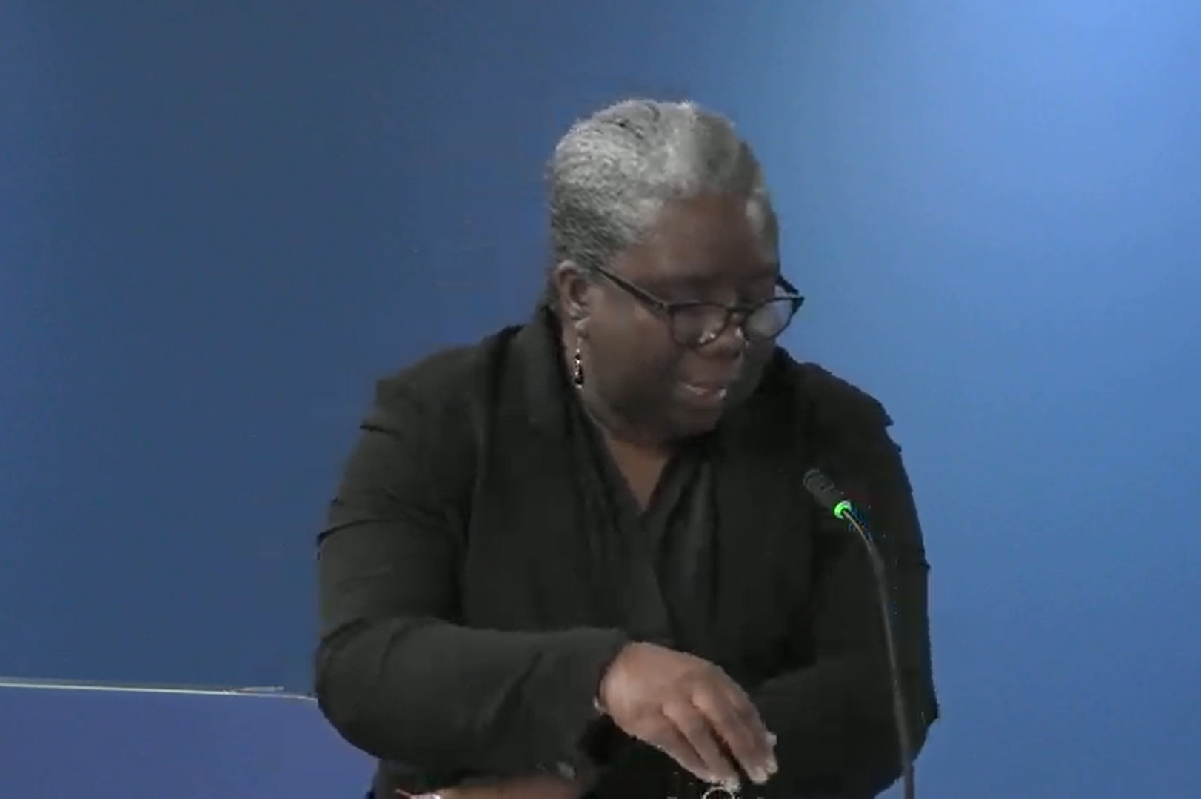

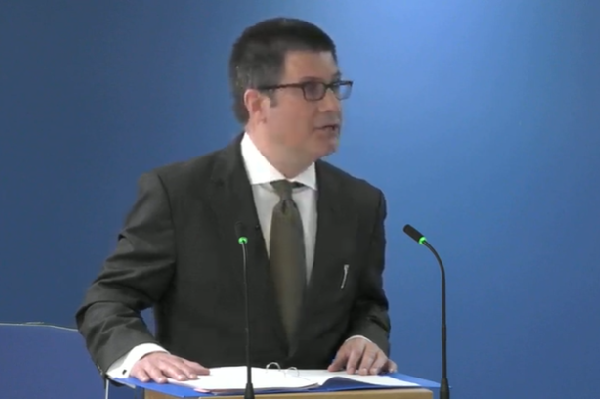
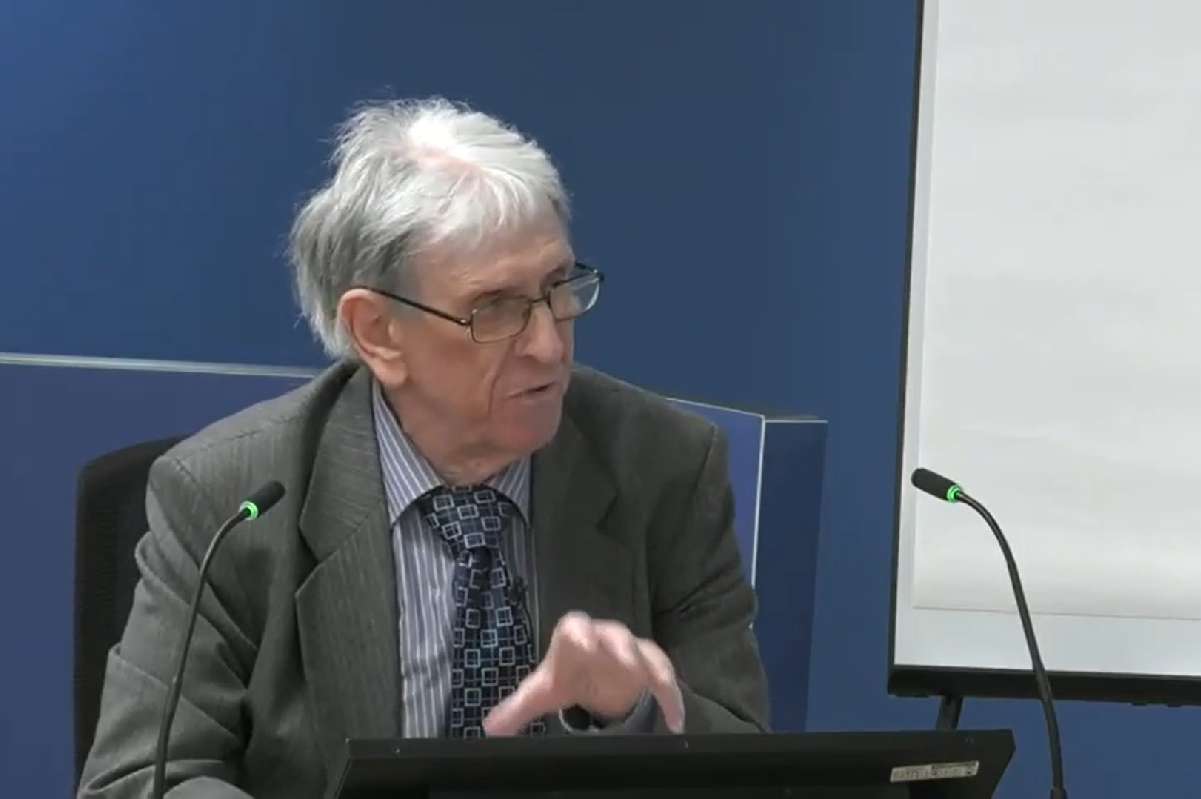
![‘The total concentrations of [carbon monoxide] in the smoke would have been derived more or less 50/50 from these two materials’ ‘The total concentrations of [carbon monoxide] in the smoke would have been derived more or less 50/50 from these two materials’](https://omghcontent.affino.com/AcuCustom/Sitename/DAM/123/Zerobond_2__thumb.jpg)
